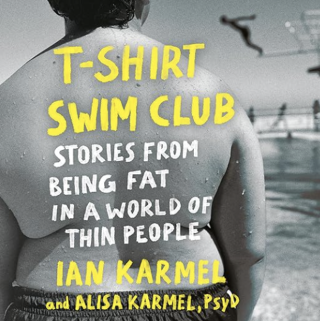Body Image
The Probelmatic Pursuit of a “Beach Body”
Body image concerns can heat up as the weather does.
Posted July 8, 2024 Reviewed by Gary Drevitch
Key points
- Many people experience body image concerns during the warmer months.
- Research suggests that "seasonal body image" is a real phenomena with real consequences.
- Appearance-centric industries capitalize on body concerns to offer a variety of products during the summer.

It’s July and, if you’re lucky, you’ll be able to get to a beach, a lake, or at least a pool as the weather heats up. Of course, this means you may also find yourself needing to wear swimwear – basically your underwear – in public.
It’s always amused me that most of us go through life covering up most of our bodies in some sort of clothing only to then bare nearly everything in settings that involve the potential for swimming. We don’t have to even be sure that we’re going swimming and we can find ourselves nearly naked in front of hundreds of strangers.
In my body image research, which often involves interviewing people about their personal experiences of body image and factors that influence their body image, concerns about people’s “beach bodies” often come up.
One 16-year-old boy told me, “I don’t remember in much detail how I used to feel at the pool, but I remember that I would try to get in as soon as possible to avoid my stomach being in sight of others.”1
Another young woman shared, “As I’ve gotten older, I’ve come to accept my body a bit more, but as the summer approaches here in the UK, I hate to even think about wearing summer clothes.”2
Another 18-year-old boy told me about a humiliated experience at a school swimming event that ended up with everyone laughing at him: “I used to have ‘man titties,’ as my friends described them.” 1
Unfortunately, it’s not just young people who have insecurities when it comes to spending time at the beach – or figuring out how to dress in warmer weather. When body image researchers have studied these issues, they’ve referred to it as “seasonal body image" — in other words, how our body image varies according to the season. In one study, Scott Griffiths and colleagues3 sought to empirically examine how people fare when “summer-centric activities involve socially sanctioned displays of minimally clothed or near-nude bodies.”
Griffiths' team's study included over 800 sexual-minority men in Australia, Canada, the U.S., and the U.K. Participants provided information about their body image as well as factors that may be relevant to seasonal body image, including feeling that one’s body is on public display. (The sample focused on sexual-minority men as it was part of a larger research project, not because of a particular interest in this population.) Approximately 70% of their sample reported seasonal body dissatisfaction or some variation in their body dissatisfaction across the seasons. During the summer months, body dissatisfaction peaked and so did feeling body and appearance pressures from advertisements and social media. Further, participants reported feeling most apt to compare their appearances to others during the summer. In contrast, all of these experiences were lowest during the winter. Griffiths also points out that being in “beach body” circumstances and not wearing the proper attire or not taking off a t-shirt or cover-up may have the opposite of the desired effect, actually drawing more attention to those insecure about their bodies.

This exact point is also discussed in Ian and Alisa Karmel’s4 aptly named memoir/ psychoeducational book, T-Shirt Swim Club: Stories from Being Fat in a World of Thin People. In it, they describe what it is like to grow up fat. The Karmels point out that not everyone realizes they are fat, or that being fat is considered problematic at a very young age. But soon enough, opportunities for bodily exposure – the pool, a lake, the beach – make it clear that fat should be concealed. This is when Ian admitted to starting to wear a shirt in the pool while now realizing all this did was broadcast, “Of course this kid is fat; look at him wearing a shirt in the pool; only fat kids do that. It confirms the very thing you think you’re trying to hide.”
Griffiths reiterates this point in his article, stating, “The insecure individual may then experience anxieties or fears about being perceived as worrying about their body image, creating an anxiety cycle.” It seems pretty obvious that appearance-centric industries capitalize on these layers of insecurity to offer products, remedies, and solutions to make our bodies more “beach ready.” But consuming these material assurances is unlikely to quell our deep-seated concerns. Feeling positively about our bodies is not just about our weight, shape, or how we look in a bathing suit. In Alisa Karmel’s words, “Accepting our bodies today and celebrating what we look good in now is difficult yet necessary for emotional well-being.”
In other words, celebrate your beach body, no matter what it looks like.
References
1) Markey, C. H., Hart, D., & Zacher, D. (2022). Being You: The Body Image Book for Boys. Cambridge, U.K.: Cambridge University Press.
2) Markey, C. H. (2024). Adultish: The Body Image Book for Life. Cambridge, U.K.: Cambridge University Press.
3) Griffiths, S., Austen, E., Krug, I., Blake, K. (2021). Beach body ready? Shredding for summer? A first look at “seasonal body image.” Body Image, 37, 269-281. https://doi.org/10.1016/j.bodyim.2021.03.004.
4) Karmel, I., & Karmel, A., (2024). T-Shirt Swim Club: Stories from Being Fat in a World Full of Thin People. New York: Rodale.


